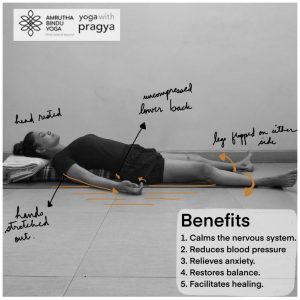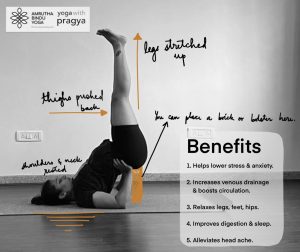In the last two weeks I’ve had two requests for a restorative class. Seems like an interest in restorative asanas is building up. In view of the times we are living in, I’m not entirely surprised by the request. However, I do feel that the requests were fueled more by the idea that restorative postures are for when you’re unable to do your regular workout, instead of a useful addition to the routine.
It’s a common mistake to equate ‘restorative’ yoga with ‘too easy for me’ yoga. Many people consider restorative yoga classes to be ‘slow’, ‘easy’ and ‘for the old and injured’.
It is incorrect to think that a restorative yoga class is an easy yoga class that is somehow less than a vigorous sweat sesh.
What Are Restorative Asanas?
Restorative asanas ‘restore’ your body. Restore it’s energy, vitality and good health. Classes are slower, with longer holds for asanas. Students are encouraged to use props and to always rest the forehead. When you rest the forehead, your nervous system immediately relaxes. In fact, I’ve taken my students through an entire class designed to show the difference between supported and unsupported asanas. Watch it here.
The asanas in a restorative class are a subset of the ones in your regular yoga class. But these are asanas focused more on forward bending and gentle twists and backbends (all with the support of props). Below are examples of a few asanas that you may encounter in a restorative class.
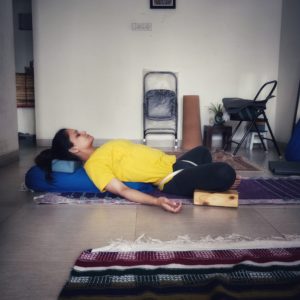
Supta Badhakonasana. I love beginning a restorative class with this posture.
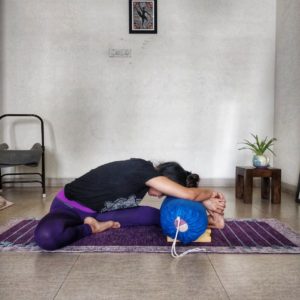
A restful janu sirsasana. Restorative asanas focus on relaxing the mind, by resting the head.

Dwi pada viparita dandasana. This posture is very intense, but this variation can be done even while you’re menstruating (as I was when this picture was taken).
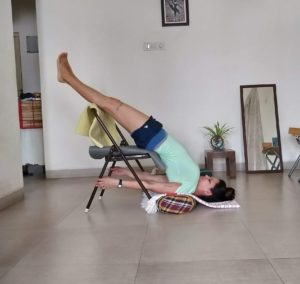
A supported sarvangasana – a posture that should be done daily, but is not accessible to all. The props make it easier and more restful.
Benefits of Restorative Yoga
- Provides relief from anxiety and stress. Holding asanas for longer helps in releasing deep seated tightness.
- Great for when you’re menstruating! Even on your first day!
- Promotes better sleep.
- Helps the body to heal. When your nervous system is rested it starts to work optimally, providing a boost to the healing systems of the body.
- Improves immunity. A stressed mind impairs the body’s ability to produce immunity-boosting cells, leaving the body prone to infection.
- Lowers blood pressure (by promoting relaxation).
- Relief from a busy mind and fast thoughts.
What’s interesting is that though a restorative class is slower than other forms of yoga, it doesn’t mean that a flexible and bendy practitioner who is ‘good’ at yoga will be ‘good’ at restorative yoga too. In fact, I’ve seen very flexible and seemingly energetic students find it difficult to ‘rest’ and ‘do nothing’. After all, in such a busy and complicated life, stillness is elusive and to sit and simmer with it all is more elusive still.
Have you ever practiced restorative asanas? Do you find value in adding an element of restorative yoga to your existing yoga/fitness routine?
